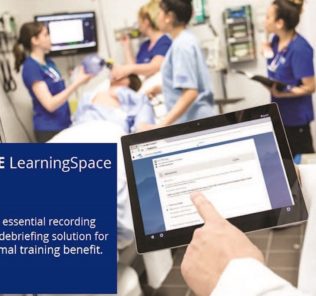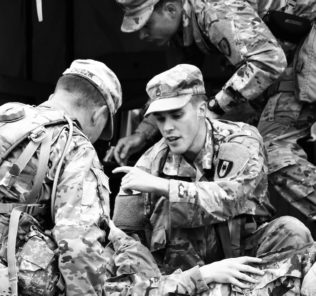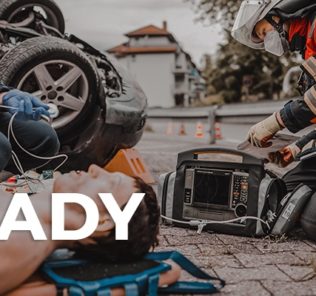Word Choice Matters: Reception of Simulation-Based Learning is Impacted by Framing
Substitute teachers seldom garner a level of respect equal to that of the full-time teacher. Major League Baseball took years to recover from the employment of replacement players during the 1994-1995 strike. Fans are disappointed when the backup quarterback takes the field. Just as in the case with these scenarios, healthcare simulation-based learning suffers the same negative reception when this proven teaching strategy is thought of as a substitute, replacement, or backup for traditional clinical hours.
Ultimately, word choice matters. Some words have a more positive or negative connotation. Yet, the use of these words can influence a person’s feelings toward other words in the same sentence.
Word choice influences judgment. This is known as the framing effect, a cognitive bias wherein decisions are influenced by the way information is presented. Equivalent information can be more or less attractive depending on what features are highlighted. Nearly synonymous ways of expressing the same information can lead to very different conclusions and assumptions (Prera, 2021). An optimist sees a glass as half full, while the pessimist sees the glass as half empty. The glass is the same but word choice changes the perspective.
Sponsored Content:
Framing commonly draws attention to either the positive gain or negative loss associated with an option. Think of framing as a way to change meaning by manipulating the perspective, just as the frame around a picture influences the way that picture is viewed.
Decisions based on the framing effect are made by focusing on the way the information is presented instead of the information itself. Such decisions may be sub-optimal, as lesser options can be framed in a positive light making them appear more attractive than options that are objectively better but cast in a less favorable light (Hauser & Schwarz, 2018).
Again, word choice matters. Students’ judgments of the value of simulation-based learning are influenced by the way the learning is framed through word choice. If students think clinical simulation is a backup for times when they cannot go into the clinical setting, they come into the simulation lab expecting to be disappointed. They think, “clinical must be the preferred method of learning if medical simulation is a substitute or replacement for clinical hours; I would rather be in clinical!”
These feelings are similar to those experienced by the audience when the understudy performs on Broadway. Too often, healthcare simulation is seen as the lesser option for learning despite strong evidence to the contrary.
Sponsored Content:
Follow the Evidence
The landmark NCSBN National Simulation Study provides substantial evidence that up to 50% of healthcare simulation can be effectively substituted for traditional clinical experience in all prelicensure core nursing courses (Hayden et al., 2014). While this research goes a long way in establishing the value of simulation-based learning, the research also tied the terms substitute and replacement to clinical simulation. The word substitute is used 11 times in the published report and replacement appears four times.
Since the NCSBN study, the evidence in support of simulation-based learning just keeps piling up. Learner outcomes can be consistently achieved in simulation activities designed to ensure that specific competencies can be practiced and evaluated. Students in simulation complete more patient care activities and can perform these tasks independently (Sullivan et al., 2019).
Healthcare simulation offers a more concentrated learning environment than the traditional supervised clinical experience. The efficiency of simulation is leading some educators to advocate for a 2:1 ratio of clinical to healthcare simulation hours (Sullivan et al., 2019).
In stark contrast to the plethora of evidence demonstrating the advantages of simulation-based education, there is weak evidence supporting the effectiveness of traditional clinical education (Sullivan et al., 2019). In fact, a systematic review aimed at examining the best evidence available regarding the use of traditional clinical experience, came up empty. No sufficient evidence was found to support traditional clinical models (Leighton et al., 2021).
The time to move past the idea of healthcare simulation being a viable replacement or substitute for clinical hours is now. Medical simulation is valuable and should be seen as an adjunct to both clinical and didactic learning.
Highlighting the Positive Attributes of Healthcare Simulation
Using terminology such as adjunct, complement, or supplement when referring to simulation-based learning conjures a more positive reaction from students. Framing simulation as a safe environment where learning opportunities can be created, modified, and presented at will, allows learners to appreciate the inherent value of this proven methodology. Learning in the clinical simulation lab is more concentrated; there is little to no downtime which is in stark contrast to their experience in the traditional clinical setting. Time-on-task studies reveal learning objectives are more likely to be achieved in the simulation setting when compared to the traditional clinical setting (Haerling & Prion, 2021).
The amount of evidence in support of learning in the simulation setting far outweighs the data available examining student learning in clinicals. Clinical settings vary greatly, leading to inconsistent experiences for students and no way to guarantee specific learning opportunities (Sullivan et al., 2019). Patient safety is the priority in the clinical setting, and always will and should trump student learning.
The clinical environment cannot be manipulated to provide a particular scenario for student learning ~ what you see, is what you get, making learning opportunistic. Student learning is the priority in the simulation setting and the environment can be adjusted to meet student needs ~ what you need, is what you get!
Simulation and Competency-Based Education
Researchers continue to share evidence of a troublesome academic-to-practice gap with a negative impact on quality and safety in patient care. Graduate nurses who enter the workforce underprepared increase the risk of medical errors, worsen patient outcomes and inflate the cost of healthcare. To address this problem, accrediting bodies and nursing professional organizations are calling for a transformation from traditional, lecture-based teaching to competency-based education.
Healthcare education is shifting away from traditional teaching methods focused on memorized information to education focused on developing the complex competencies required for effective, safe, and high-quality care. This transformation involves emphasizing experiential learning and opportunities to practice complex skills and abilities, further enhanced by frequent feedback and reflection (Wolf, 2022).
Effective competency-based education requires new assessment systems that permit students and faculty to track progress toward competency-focused learning outcomes. Programs are incorporating more healthcare simulation into their curricula because this focus serves the dual functions of training and competency assessment (Wolf, 2022).
With the move toward competency-based education, learners and educators must come to think differently about healthcare simulation’s role in education and training. Medical simulation is no longer a nice-to-have, stand-by for clinical replacement. Rather, healthcare simulation is an evidence-based teaching strategy that can be designed for the achievement of specific learning objectives and competencies. Clinical simulation can provide the experiences healthcare professionals need but cannot always engage in during real-life patient care.
Healthcare Simulation as a Requirement, Not an Allowance
Healthcare simulation is not better than, less than, or equal to clinical-based learning; clinical simulation is different and its ability to advance student learning is well-documented. Imagine if healthcare simulation-based learning was a required part of healthcare educational programs, instead of being allowed as a substitute for other types of training. There is certainly enough evidence to support this shift. The impact on learners and simulation programs would be HUGE!
- Haerling, K. & Prion, S. (2021). Questions regarding substitution of simulation for clinical. Clinical Simulation in Nursing, 50(2021). 79-80.
- Hayden, J.K., Smiley, R.A., Alexander, M., Kardong-Edgren, S., & Jeffries, P.R. (2014). The NCSBN National Simulation Study: A Longitudinal, Randomized, Controlled Study Replacing Clinical Hours with Simulation in Prelicensure Nursing Education. Journal of Nursing Regulation, 5(2s).
- Leighton, K., Kardong-Edgren, S., McNelis, A.M., Foisy-Doll, C. & Sullo, E. (2021). Traditional clinical outcomes in prelicensure nursing education: An empty systematic review. Journal of Nursing Education, 60(3), 136-142.
- Oman SP, Magdi Y, Simon LV. Past Present and Future of Simulation in Internal Medicine. (2021). In: StatPearls [Internet]. Treasure Island (FL): StatPearls Publishing; 2022 Jan-. A
vailable from: https://www.ncbi.nlm.nih.gov/books/NBK549883/ - Prera, A (2021, June 10). Framing effect. Simply Psychology. Retrieved from www.simplypsychology.org/framing-effect.html
- Sullivan, N., Swoboda, S.M., Breymier, T., Lucas, L., Sarasnick, J., Rutherford-Hemming, T., Budhathoki, C., & Kardong-Edgren, S. (2019). Emerging evidence toward a 2:1 clinical to simulation ratio: A study comparing the traditional clinical and simulation settings. Clinical Simulation in Nursing, 30(C), 34-41.
- Wolf, A. (2022). Adapting nursing programs to competency-based education. Nursing, 52(2), 12-13.
Jeanne Carey is the Director of Simulation at Baylor University Louise Herrington School of Nursing in Dallas, Texas. She holds advanced certification as a simulation educator and has 10 years of experience in all aspects of simulation, including the development and implementation of new simulation-based learning activities, training of simulation facilitators, and recruitment and management of standardized patients. Carey and the LHSON Simulation Team created the Two-Heads-Are-Better-Than-One (2HeadsR>1) strategy for role assignment in simulation. She is active in several simulation organizations and currently serves as an INACSL Nurse Planner.
Sponsored Content:






















